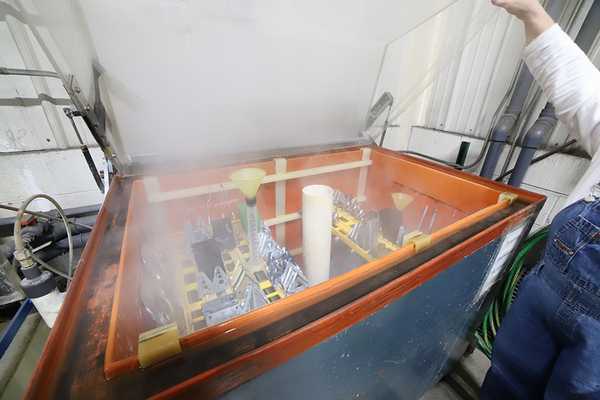- Qinsun Instruments Co., Ltd.
- Tell:+86-21-6780 0179
- Phone:+86-17740808215
- Address:No. 2578 Minhang District Gu Dai Road, Shanghai
- Contact:Mr. Li
- QQ:846490659
The mechanism of vibration aging

From a macro perspective, vibration aging causes plastic deformation of parts, reduces and homogenizes residual stress, and improves the material's resistance to deformation, which is undoubtedly the basic principle that leads to stable dimensional accuracy of parts. From the analysis of residual stress relaxation and part deformation, it can be seen that the existence and instability of residual stress cause stress relaxation and redistribution, leading to plastic deformation of the part. Therefore, thermal aging methods are usually used to eliminate and reduce residual stresses, especially dangerous peak stresses. Vibration aging can also reduce residual stress. After vibration treatment, the residual stress of the parts can usually be reduced by 30-55%, while also reducing the peak stress and making the stress distribution uniform.
Another important factor that determines the dimensional stability of a part, in addition to residual stress values, is relaxation rigidity or the part's ability to resist deformation. Sometimes, although parts have significant residual stress, their strong resistance to deformation does not cause significant deformation. In this regard, vibration aging also shows a significant effect. According to the loading test results of vibration aging, it can be seen that the deformation resistance of vibration aging parts is not only higher than that of parts without aging, but also higher than that of parts treated with thermal aging. By vibration, the material is strengthened to achieve stable dimensional accuracy of the parts.
From a microscopic perspective, vibration aging can be seen as an additional dynamic stress applied to a component in the form of cyclic loads. As is well known, the materials used in engineering are not ideal elastomers, and there are different types of microscopic defects inside them. In cast iron, there are a large number of graphite with different shapes that can cut metal substrates. Therefore, whether it is steel, cast iron, or other metals, there are varying degrees of stress concentration near the microscopic defects. When subjected to vibration, plastic deformation occurs when the alternating stress applied to the part exceeds the yield limit of the material. This plastic deformation reduces the peak residual stress at that location and strengthens the metal matrix. Then, vibration exerts the same effect on some areas with severe stress concentration until the algebraic sum of the additional stress and residual stress cannot cause plastic deformation in any part. At this point, vibration no longer has the effect of eliminating and homogenizing residual stress and strengthening metal. The above explanation has been proven by a large number of experiments.
Mainly explain the mechanism of vibration aging from the perspective of metal theory such as dislocations and lattice slip.
The main viewpoint is that the vibration aging process is actually achieved by applying a certain amount of dynamic energy to every part of the workpiece (from a microscopic perspective, every microscopic lattice in the workpiece) under the resonance state of the workpiece. If the applied energy value is the sum of the original energy value of the microstructure itself (residual stress itself is a potential energy), If it is sufficient to overcome the well potential around the microstructure (which can also be said to be the binding force for restoring equilibrium), plastic deformation will inevitably occur in the microscopic region, allowing the distorted lattice that generates residual stress to slowly restore equilibrium, allowing dislocations at stress concentration to slip and re pin, achieving the goal of eliminating and homogenizing residual stress. For areas where residual stress is concentrated, the residual stress value is relatively high, and the potential energy value of the microstructure itself to restore equilibrium is also relatively high.





